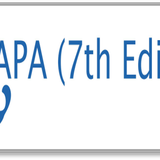Fraud Procurement Of Goods And Services A Perspective Of The Theory Of Planned Behavior
DOI:
https://doi.org/10.24912/ja.v22i3.395Abstract
This research adopted the theory of planned behavior to examine the factors affecting the intentions fraudulent procurement of goods and services. The purpose of this research are to examine the effect of attitude toward behavior, subjective norm, and perceived behavioral control on the intentions fraudulent procurement of goods and services. The sample in this study are working group of procurement services units at each city/regency goverment in south borneo. The method of data collection is survey using questionnary as instrument of the research. The ammount of the sample was 316. The data was analysed using Structural Equation Modelling-Partial least square (SEM-PLS) with WarpPLS 6.0. The result of research finds attitude toward behavior, subjective norm, and perceived behavioral control has a positive effect on the intentions fraudulent procurement of goods and services.
Downloads
Published
How to Cite
Issue
Section
License
Copyright (c) 2018 Jurnal Akuntansi

This work is licensed under a Creative Commons Attribution-NonCommercial-ShareAlike 4.0 International License.
This journal provides immediate open access to its content on the principle that making research freely available to the public supports a greater global exchange of knowledge.

This work is licensed under a Creative Commons Attribution-NonCommercial-ShareAlike 4.0 International License



















